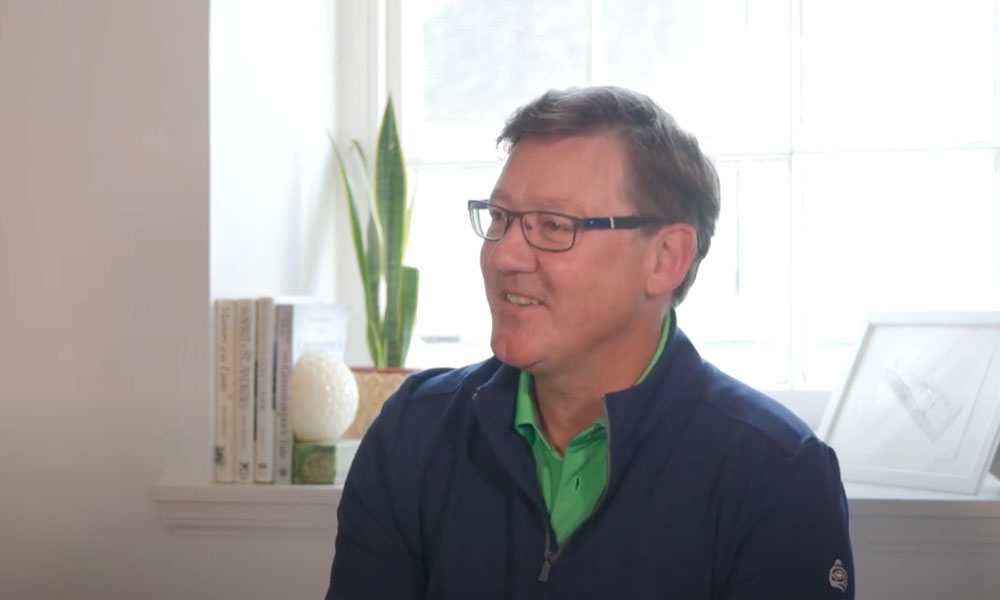In recent years, the conversation around sustainability has become central to various industries, and golf is no exception. Jonathan Smith, founder and Executive Director of the GEO Foundation for Sustainable Golf, shared his insights during a podcast interview on Growing Golf, highlighting how golf courses and facilities can evolve by integrating sustainable practices. His journey from a passionate golfer to a leading advocate for sustainable golf underscores both personal and professional dedication to the cause.
The Path to Sustainability
Jonathan’s story began in Scotland, where he grew up playing golf at local courses, enjoying the camaraderie and community spirit. His love for the outdoors was innate but not initially driven by a strong environmental awareness. It was during his university years at St. Andrews, while studying geography and sustainable development, that he started understanding the deeper connections between landscapes, communities, and environmental stewardship. This academic and personal shift laid the groundwork for his future endeavors.
After completing his studies, Jonathan’s career took an essential turn when he was appointed as the first full-time environmental manager for the Scottish Golf Union in 1996. This role exposed him to various facets of the golf industry—from grassroots facilities to major tournament operations—and the realization that sustainability needed to be integral to the future of golf.
Redefining Sustainability in Golf
Sustainability, as Jonathan points out, is no longer just about balancing economic, social, and environmental interests; it has evolved to prioritize the environment as the foundation that supports society and the economy. This shift in perspective places golf courses in a unique position to not only meet sustainability challenges but to lead by example. Golf courses are expansive landscapes that, with strategic stewardship, can support biodiversity, improve water management, and foster community engagement.
Jonathan emphasizes that sustainability is not a compromise but a pathway to greater success. By incorporating social responsibility and environmental practices into business models, golf courses can become more resilient and profitable. This is evident in the growing recognition of GEO-certified courses that showcase environmental and social benefits while ensuring operational success.
The Challenges and Opportunities
One challenge the golf industry faces is the perception of exclusivity and environmental harm. Jonathan acknowledges this but highlights the potential for golf to shift public perception through transparent communication and community involvement. The benefits that courses bring—such as green spaces, biodiversity hubs, and local engagement—must be effectively conveyed to gain support from communities and mitigate negative stereotypes.
Another pressing issue is water management. With climate change bringing increased weather extremes, golf courses are exploring innovative ways to capture and conserve water. Examples include rainwater harvesting, constructing water reservoirs, and utilizing treated wastewater. These initiatives, as Jonathan notes, are not just investments in sustainability but in the long-term viability of golf facilities.
Nature and Community at the Core
Golf courses have significant potential to contribute to biodiversity conservation. Jonathan highlights that courses often contain a mix of habitats, from rough grasslands and woodlands to pollinator-friendly areas. By enhancing these spaces, golf facilities can play a role in local ecological health. For instance, collaborative projects like the “nectar network” in Scotland demonstrate how multiple courses can work together to boost pollinator populations and support broader environmental goals.
Beyond nature, integrating sustainability into a golf course’s operation can strengthen community ties. Courses that open their spaces for activities like walking, cycling, and educational programs showcase their value as community assets. Clubs that engage in charitable efforts, contribute to local causes, and foster educational programs around environmental awareness further solidify their role as community partners. Initiatives like these help break down barriers of exclusivity, presenting golf as a socially responsible and inclusive sport.
Related: Audubon Cooperative Sanctuary Program for Golf Courses: More Relevant than Ever
A Collective Effort
Jonathan stresses that the shift toward sustainability must be a full-facility approach. Superintendents and course managers play crucial roles but must be supported by general managers, assistant managers, and marketing teams. By embedding sustainable practices into the fabric of club operations, courses can transition from viewing sustainability as an optional add-on to an essential aspect of business strategy.
Programs such as the GEO Foundation’s “OnCourse” platform provide practical pathways for clubs to start small with sustainable actions and build toward more significant projects. This kind of structured approach allows clubs to map out their sustainability journeys, track progress, and engage their communities effectively.
Leading by Example
Tournaments, too, are making strides in sustainability, serving as high-profile models for best practices. The integration of eco-friendly initiatives, from minimizing carbon emissions to fostering community engagement, helps raise awareness and set benchmarks for grassroots clubs to follow. Events like the Open Championship and the Alfred Dunhill Links Championship demonstrate that sustainability in golf can be both impactful and scalable.
Conclusion
Golf’s role in sustainability is multifaceted, extending beyond the fairways and greens to include social responsibility, environmental stewardship, and community partnership. Jonathan Smith’s work through the GEO Foundation exemplifies how golf can be a force for positive change. As more clubs adopt sustainable practices, golf has the opportunity to redefine its legacy—not only as a sport but as a global leader in promoting a healthier, more resilient planet.



























